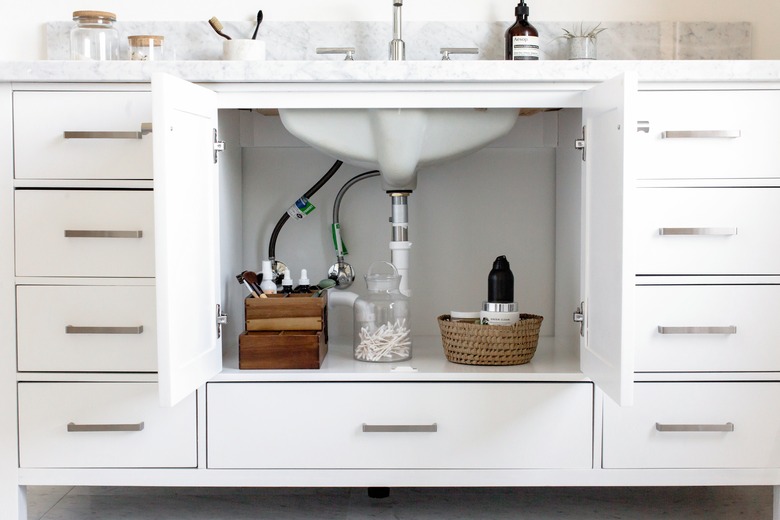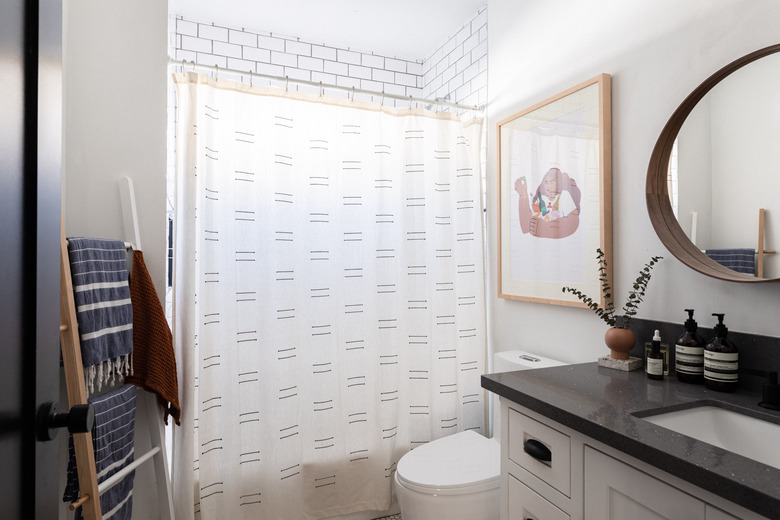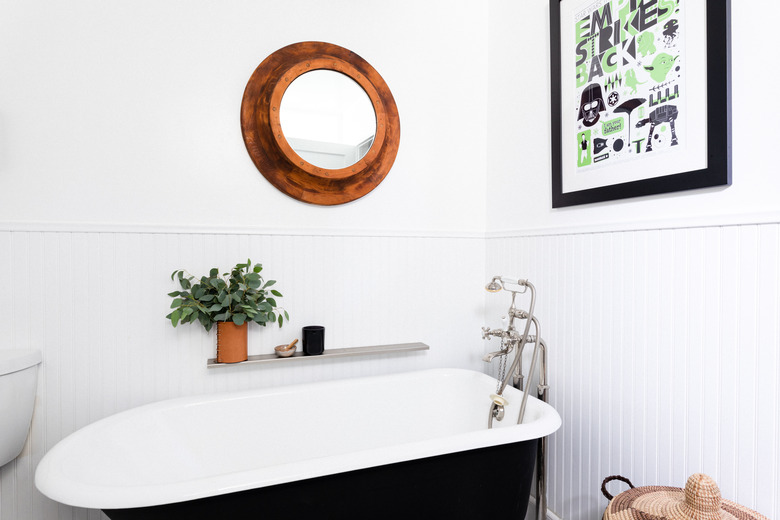Bathroom Remodel Plumbing: A Homeowner's Guide
Along with the kitchen, the bathroom is the room where plumbing fixtures play the biggest role, and bathroom remodel plumbing is perhaps the most important element when this room undergoes a major remodeling job. The plumbing work, which generally requires the services of a professional plumber, is what makes bathrooms such expensive rooms to remodel.
Understanding the complexity of bathroom remodel plumbing is essential to understanding the overall cost of the project, and this knowledge is essential to figuring out ways to economize your bathroom remodel.
Assessing Your Bathroom Remodel Needs
Assessing Your Bathroom Remodel Needs
Everyone likes to dream when it comes to planning a new bathroom, but the stark reality is that the dreamier your aspirations, the costlier your bathroom is likely to be. Relatively simple bathroom remodel plumbing means a fairly affordable project, while costs quickly skyrocket if the plumbing work is complicated.
In a bathroom in which new fixtures are merely installed in the same locations as the old, the plumbing work can cost as little as a few hundred dollars in plumbers' fees. By contrast, in an expanded bathroom that features luxury fixtures moved around within an expanded layout, then the bathroom remodel plumbing can cost literally tens of thousands of dollars.
Most bids for plumbing work include the cost of the fixtures themselves, and the quality level of the fixtures will play a large role in determining the overall cost of the bathroom remodel plumbing. Basic, serviceable fixtures — while still a notable fraction of the overall plumbing costs — usually cost roughly one-third or less than luxury fixtures.
For example, a perfectly serviceable sink faucet can cost less than $100, while there are designer faucets that cost upward of $500. When looking at the overall costs of your bathroom, you may come to the conclusion that an $800 toilet is really not worth it when a $200 toilet serves pretty much the same function. This really depends on your tastes and budget.
Determine Plumbing Pipe Replacement
Determine Plumbing Pipe Replacement
First, while you're still in the planning stage of your project, try to determine if your bathroom remodel plumbing will require the replacement of old water supply and drain pipes with new materials. This can increase the cost of your plumbing work significantly. In older homes that have not been upgraded, you may find galvanized steel or cast iron plumbing pipes. Because these are susceptible to corrosion, it is almost certain that these pipes are near the end of their useful life and will need to be replaced. This might even be a good time to go all the way and have the plumbing pipes throughout the house replaced since they are all living on borrowed time.
The issue is less clear cut if you have copper pipes. Once regarded as the gold standard for plumbing, the reality is that copper pipes also have a limited life span, generally regarded as 20 to 50 years. After this, copper can begin to develop pinhole leaks. Most plumbers advise that if your plumbing is more than 20 years old, it's a good idea to replace it during a bathroom remodel. The replacement material of choice is now flexible PEX tubing, which is very easy and less expensive to install than copper.
Remodel Scenario 1: Bathroom Fixture Replacement
Remodel Scenario 1: Bathroom Fixture Replacement
The easiest and cheapest bathroom remodel plumbing is when you are simply replacing existing fixtures in their current locations and when there is no need to replace old plumbing pipes. This can still be part of a major bathroom remodel in which all the cabinetry, walls and flooring surfaces are replaced, but the plumbing costs are greatly reduced if the project involves nothing more than removing and replacing the old toilet, sink and faucet or shower or tub in the same location. This can involve no more than a day or so of a plumber's time. Further, skilled DIYers may be able to handle this kind of work themselves. Plumbing fixtures are still a notable cost of the project, but without paying for professional labor, you can save thousands of dollars.
Remodel Scenario 2: Upgrading Bathroom Pipes
Remodel Scenario 2: Upgrading Bathroom Pipes
More often than not, a major bathroom remodel will involve removing old pipes and installing new plumbing pipes. These days, this usually means installing PEX flexible tubing for the water supply and PVC pipes for the drain lines. PEX (which stands for "cross-linked polyethylene") is a flexible tubing that can curve and bend without installing elbows and other fittings. This makes it a favorite among professional plumbers and increasing numbers of DIYers since it can greatly reduce labor time.
A major remodeling is the logical time to replace old pipes since the walls and floor surfaces are often being replaced anyway, and there is easy access to the plumbing lines. Some skilled DIYers are able to do this, but more often, this kind of replacement work requires a professional plumber who will apply for a building permit to do the work. This kind of replacement also involves having the work reviewed by a building inspector.
Remodel Scenario 3: Moving Plumbing Fixtures
Remodel Scenario 3: Moving Plumbing Fixtures
The most expensive bathroom remodel — but the one that gives the most dramatic results — is one in which the existing fixtures are moved around within the layout of the bathroom. This most often occurs during a major buildout, when a bathroom is actually expanded into an adjoining room or when a bathroom is added to a major room addition.
The bathroom remodel plumbing here is a major part of a very expensive overall remodeling project. The plumbing in such a project may involve entirely gutting an existing bathroom and all its pipes and fixtures, or it can occur when starting from scratch in a newly framed bathroom. Such luxury bathrooms can cost upward of $50,000, of which the plumbing component could cost as much as $20,000.
When you look at the details, it becomes easier to understand how the plumbing costs so much in this kind of project. The plumber may be tearing out old pipes and running many feet of new piping from the main drain and main water supply lines to each fixture location. Then, termination fittings such as faucet and toilet stubouts are installed, drain shower pans are mortared into place with drain fittings installed and a toilet flange is mounted into the floor. The plumber conducts a walk-through review with the city building inspector and then works with the homeowner to select all the fixtures for the project.
The plumber then orders the fixtures, picks them up at the retailer or plumbing supplier and then waits for most of the bathroom's carpentry and finish work to be concluded. Only now does the plumber return to install and connect the sink and faucet, bathtub and shower valve and the toilet. He may then conduct the final review with the inspector before billing you for the final payment.
Building Permits and Inspections
Building Permits and Inspections
It's critical that the bathroom remodel plumbing follows code guidelines. For any project other than a very simple replacement of fixtures in their current location, this means that a building permit for the plumbing work will need to be secured (it generally costs around $75 or so). This is a different permit than the overall construction permit, and part of the process is for your plumber (or you if you are the DIYer) to call the city inspections office to arrange for an inspection at the proper time.
Depending on your location, there is at least one and sometimes two plumbing inspections involved. The first occurs at rough-in, when the plumbing pipes have been installed but the wall and floor surfaces are not yet finished. At this point, the inspector can easily see the piping and verify that it is correctly installed. Usually, there is also a second inspection upon completion of the job when the fixtures are installed and operating. Sometimes, this second inspection is waived, especially if the work is being done by a professional plumber, and the inspector is familiar with that plumber's work.
Estimating Plumbing Costs
Estimating Plumbing Costs
Determining the costs of plumbing work for a bathroom remodel can be very difficult because these costs are estimated in different ways, and the prices charged by plumbers can vary widely, even in the same community. If you are working with a general contractor for the bathroom remodel, the costs of the plumbing work are often contained within the overall bid for the project. Some contractors do much of the plumbing work themselves, calling in a professional plumber only for key elements of the job.
If you are doing most of the work on a bathroom remodel yourself but hiring a plumber as a subcontractor to do the plumbing work, there are several guidelines you can use that are based on common methods used by professional plumbers to estimate the cost for plumbing a bathroom:
- Some plumbers bid on the plumbing work based on a cost per fixture. The number used generally varies from $600 to $1,600 per fixture based on whether you are choosing low-end basic fixtures, medium-grade fixtures or luxury-grade fixtures.
- If fixtures are being moved within the bathroom layout by more than a few feet, you can expect the plumber to add to the bid, sometimes by as much as $500 to $1,000 per fixture. Moving fixtures around in the bathroom layout can lead to considerable extra work, including changes to framing and drilling new access holes to run pipes.
- If the job requires replacing old plumbing pipes, plumbers sometimes bid the job based on the square footage of the bathroom. On average, running new pipes costs between $800 and $1,000 if the pipes are being run to the existing locations but costs upward of $2,000 if the fixtures are being moved within the bathroom or if the pipes are in difficult locations, such as below a concrete slab. Note that this cost is in addition to the basic per-fixture charge for the plumbing work.
- Some plumbers prefer to work by an hourly charge for their labor, but labor charges can vary greatly. According to statistics compiled by HomeAdvisor, labor rates for plumbers range from about $40 per hour to about $200 per hour depending on the experience level of the plumber and the type of business operated. An independent journeyman plumber typically charges between $45 and $65 per hour, while a master plumber affiliated with a major company can charge substantially more.
National statistics say that an average-sized bathroom with medium-grade fixtures with a major layout change, including replacing pipes, costs an average of $13,600 for the plumbing work. While this sounds like a lot of money, remember that this includes the cost of the fixtures, which comprises a large part of the cost of any bathroom. In a large luxury bathroom with luxury fixtures like a whirlpool tub, shower and double sinks, costs approaching $20,000 or more for the plumbing work are not uncommon.
The DIY Option
The DIY Option
In the most extreme bathroom remodeling projects, all this work can easily take 40 or 50 hours of a plumber's labor spaced at various intervals over the course of the bathroom remodel, so it's no surprise that such major bathroom remodel plumbing can cost many thousands of dollars.
Can such work be done by a DIY homeowner? It is certainly possible for a DIYer with excellent skills and an understanding of plumbing. The DIY cost savings is perhaps a little less than for other home improvement projects since the cost of the fixtures is such a large component. However, most DIYers report that they cut costs roughly in half by doing the work themselves.
DIY work comes with its own cost. Nearly all DIYers will take a lot longer than a professional plumber to complete the work, and plumbing is by no means an easy skill to master. Remember that the cost of a bad plumbing job can be severe if the pipes fail somewhere down the road. DIY plumbing is not something that should be attempted unless you are very experienced and confident in your abilities. Many DIYers conclude such a project by resolving never to do it again.



